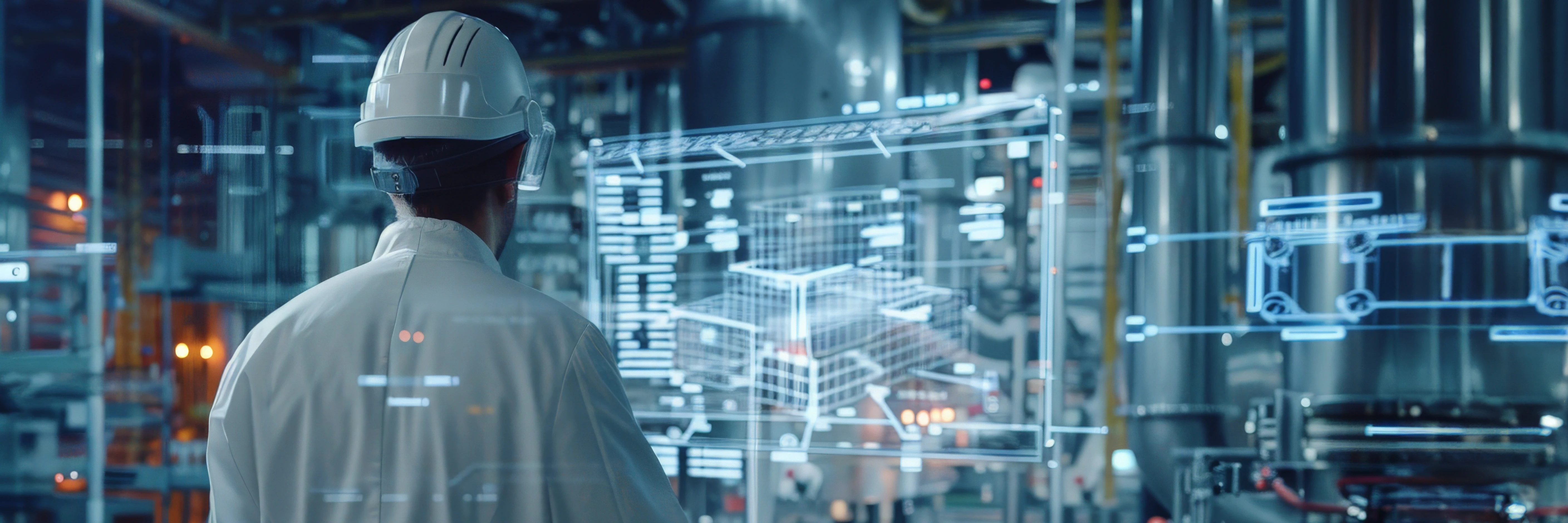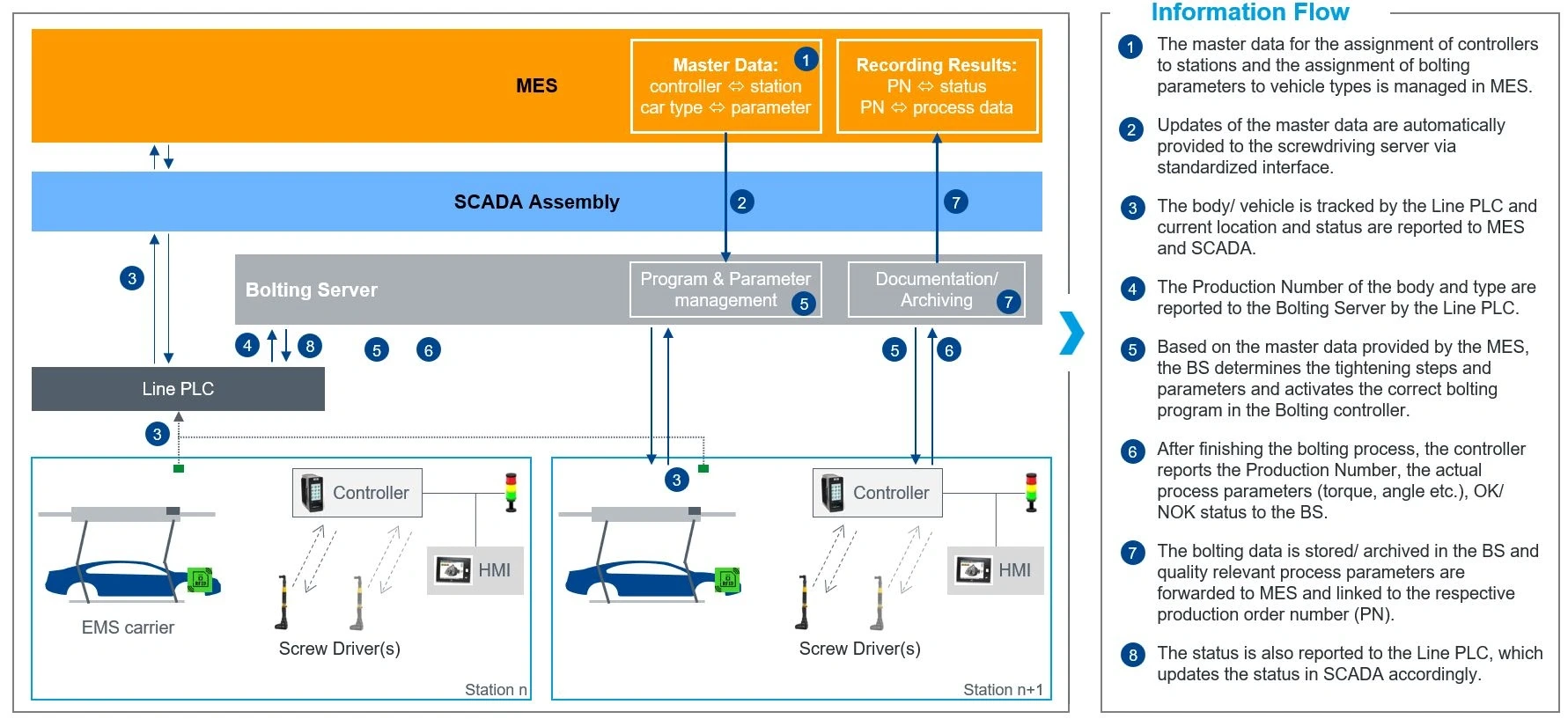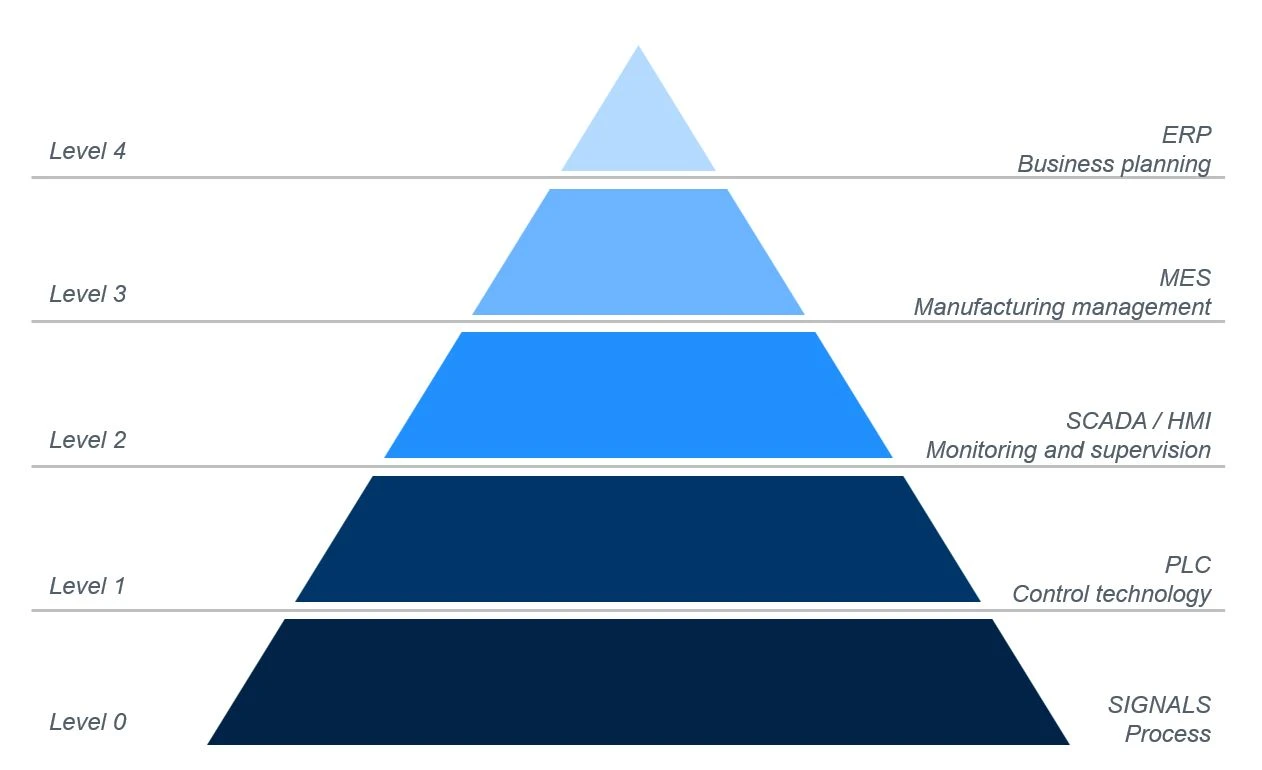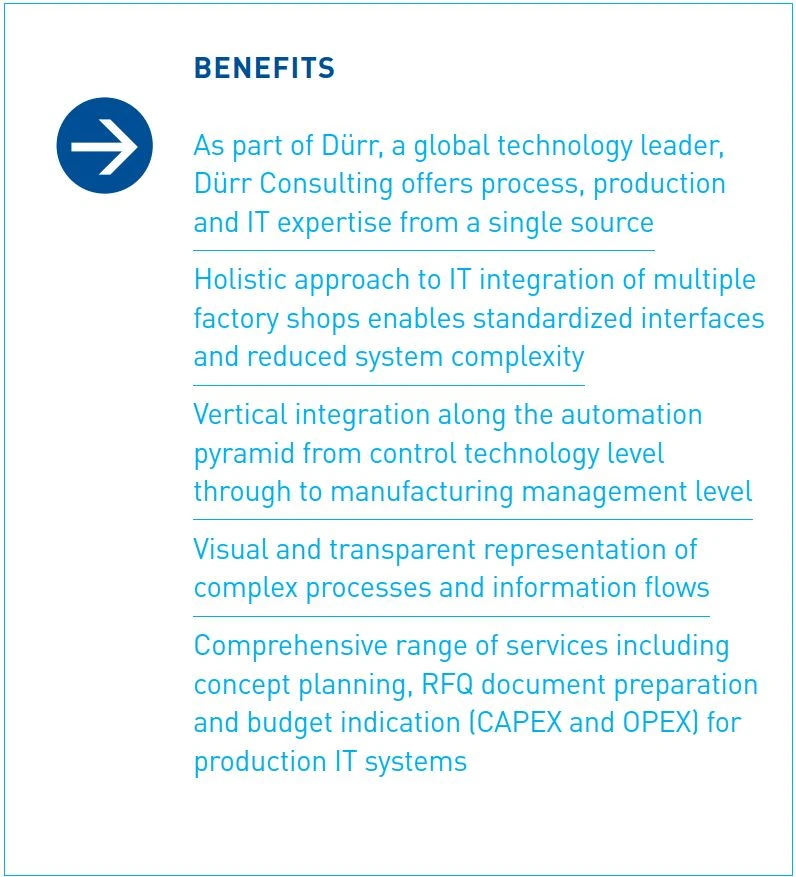Holistic production IT planning for a greenfield automotive plant
You may have heard of BMW AG and its iFactory, the Mercedes- Benz Group’s MO360 production ecosystem or VW’s Digital Production Platform (DPP), in joint development with Amazon since 2021. While the specifics of each initiative vary, their goal is the same: to use digital solutions to make automotive production more transparent, efficient and sustainable.
However, the use of modern information technology is not a unique selling point of established premium automotive companies. In today’s world, no large automotive plant anywhere in the world can do without digital support in production planning, materials management, worker assistance systems, KPI reporting and quality assurance.
This is also true for new entrants who are still planning their first factories. In contrast to the OEMs listed above, start-ups often lack not only many years of experience in the design of IT production systems but also the corresponding internal planning capacities. That’s why Dürr Consulting offers concept design for the digitalization of production as an integral part of factory planning.
Project Objectives
At the beginning of the planning project, we identify the project objectives during workshops with the customer. While each customer has its own priorities and specific goals, certain common objectives have proven to be key for production IT in past projects. Our customers consider product traceability, high and real-time transparency regarding production progress, inventory levels, quality issues, equipment malfunctions, as well as resource consumption to be important in both brownfield and greenfield projects. In addition, worker assistance systems, also known as worker information systems, have become ever more important over the past ten years. By providing the right information at the right time, plant managers expect greater flexibility as a result of shorter training times and higher quality in manual processes. All these use cases speak in favor of implementing an integrated Manufacturing Execution System (MES).
Three Shops, Three Worlds, One IT System?
Those who spend a lot of time in automotive plants know that the body shop, paint shop and final assembly shop vary considerably. Take the degree of automation, for example: 85% in the body shop but typically below 20% in final assembly.
That’s why you’ll often find different IT systems from different suppliers in plants that have developed over time. This not only makes it more difficult to consolidate the production data in a central location but also increases the maintenance work on the IT systems. Hence, when it comes to greenfield projects, stakeholders emphasize the importance of limiting the complexity of IT systems by reducing the number of different systems and thus the number of interfaces.
In order to meet this customer request, the consultants at Dürr Consulting gather and consolidate similar requirements of the various shops for the production control system. Conceptually, these similar topics, such as the management of alarm messages, body/vehicle tracking or the calculation of performance indicators, are located in a common factory SCADA system or the higher-level MES. However, functions specific to a certain shop, such as cycle time optimization in the body shop or paint supply in the paint shop, are still based on expertise from specialized SCADA providers. The guiding principle is to introduce as much standardization as possible and as many specific solutions as necessary.
The Process Determines the Requirements for the Production IT
Even though decision-makers pay close attention to new technological developments such as Industry 4.0, the IIoT and digital twin technology, it is still the physical processes and the plant’s specific production logic that determine the selection of suitable technology. Not every digital solution is relevant, and when it comes to smaller companies in particular, it is important to keep an eye on the investment and operating costs as well as the complexity of production IT systems.
In this context, less is often more. In order to assess the potential of new digital solutions, we firstly present our customers the latest technology and digital use cases. Our consultants then decide together with the customer and taking into account several criteria for each of the more than 25 use cases whether it must already be available at the start of production (SOP), can be added later or is only optional. These joint evaluations made by the Dürr IT planning experts, process planners and plant planners form the basic framework for the functional requirements the IT system must meet.
Keeping an Eye on the Information Flow
Many digital use cases, from production control to quality assurance, are based on the availability of up-to-date, valid data. Data is “fuel” for the modern factory. Despite the aim of keeping the number of IT interfaces to a minimum, a number of different systems will continue to communicate with each other in the future.
This information flow is complex and can take place in many different ways. In order to better understand the entire system, diagrams of the associated information flows are therefore created as part of the planning of the production IT systems. This involves a holistic perspective on all relevant systems of the operational technology (OT) sphere of level 1 and the information technology (IT) sphere of level 2 and level 3. Figure 1 gives an example of the information flow in a concept for integrating the bolting technology and the associated IT systems into the existing systems of the conveyor system PLC, the SCADA system of the final assembly and the higher-level MES system.
Another example of complex information flows is the end-to- end body and vehicle tracking throughout all three shops. Here it is important to ensure that the data is not lost even in the event of a brief network disruption and that the body data is transferred correctly when the transport medium is changed (e.g. a skid change). One approach to ensure consistent data integrity is a regular synchronization of transport data stored locally on the skid RFID tag and the higher-level control system.
Vertical Integration Along the Automation Pyramid
In addition to efficient data exchange between the shops - known as horizontal integration - data exchange between the individual levels of the automation pyramid (see Figure 2) - known as vertical integration - is crucial for the efficient use of process data to enable fact-based decisions.
As part of the production IT planning, Dürr Consulting starts at the PLC level. Together with the SCADA and MES level design, this results in a consistent architecture from control technology level to manufacturing management level. In practice, this means that access to relevant production data must be taken into account at control technology level as early as the design stage for MES functions. In addition, the control technology concept describes standards for component selection and describes industry-specific safety requirements.
Planning Results and Added Value for the Customer
The key challenge of production IT planning is to consolidate the requirements of different shops/areas of the factory in order to describe functional requirements for the overall production IT system. This requires a deep understanding of the production control systems at MES and SCADA level as well as the control technology level and the processes of body shop, paint shop, and final assembly. Taking a holistic approach from the planning phase onward reduces the complexity of the IT systems further down the line.
A systematic focus on production processes allows the team to differentiate between the necessary functional requirements and those that are simply nice-to-haves. The functional requirements are complemented by non-functional requirements that include safety features, for example, and those that describe user-friendliness. These are primarily based on IT standards of our customers and established industry standards. Due to our industry-specific expertise, we can ensure that these requirements are technically feasible and can be provided by market solution provider. If requested, we can also summarize the concept planning in RFQ (request for proposal) documents to enable our customers to request qualified offers from the market without additional effort.
In addition to the technical appeal and feasibility of a digital solution, financial considerations are nearly always the deciding factor when selecting the right solution. Thanks to our many years of experience in control and management technology, we are familiar with current market pricing structures and the price developments of established providers. This basis enables Dürr Consulting to create a reliable budget indication for one-off investment costs - CAPEX - and ongoing costs (e.g. maintenance and hotline) - OPEX - of the planned IT systems as part of the planning order.




